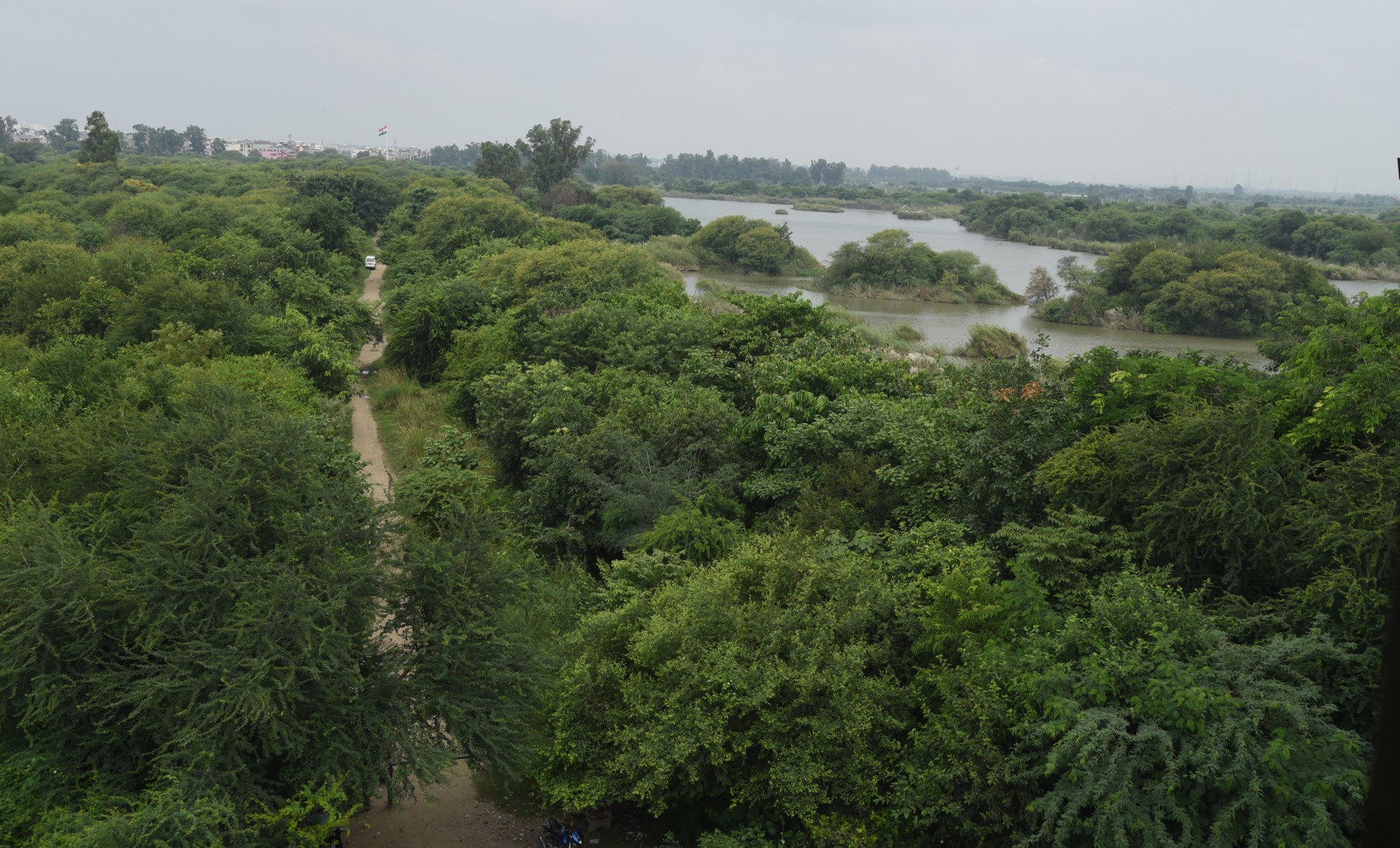
SURVIVING: The riverscape after receding of flood waters that inundated it for 25 days
In the wake of the recent devastating floods in Delhi, a beacon of hope emerged from an unexpected quarter: the Yamuna Biodiversity Park.
This sanctuary not only withstood the onslaught of flood waters but also stood as a testament to the power of nature conservation and meticulous ecological planning.
Biodiversity parks, serving as crucial conservation havens, educational centres, and cultural treasures, are instrumental in promoting environmental sustainability in urban areas like Delhi.
The city is home to seven carefully curated biodiversity parks, overseen by scientists from the Centre for Environmental Management of Degraded Ecosystems (CEMDE). These parks host over 3,500 species, organised into unique biological communities.
At the heart of Delhi’s ecological tapestry lies the Yamuna Biodiversity Park, strategically positioned along the Yamuna River upstream of the Wazirabad reservoir. This park, divided into two phases, plays a pivotal role in preserving the city’s natural heritage. The exceptional success of Phase- II of the Yamuna Biodiversity Park in safeguarding the city’s riparian biodiversity is noteworthy.
“Natural rewilding occurred, welcoming small carnivores and even a leopard. The entire ecosystem exhibited remarkable resilience during the floods,” said CR Babu, the head of CEMDE.
Babu emphasised that the park’s floodplain design efficiently absorbs and manages excess water during floods, minimising damage. He highlighted how the careful selection of native species bolstered the park’s resilience against natural calamities.
During the recent floods, floodwater was stored in wetlands within the park. Floodplain grasslands served as speed bumps, slowing down the water’s flow and enabling sediments to settle. These features decreased floodwater velocity, preventing silt accumulation in the river channel.
The floodplain catchment wetlands of the park, restoring approximately 500 million gallons of water annually, played a vital role in mitigating the impact of the flood. These wetlands intercepted and retained a significant volume of flood water, averting downstream damage and underscoring the ecological significance of the park.
“The recent floods underscore the imperative for more biodiversity parks along the Yamuna,” asserted Babu.
“We must restore riparian systems and utilise resources like the Kalindi Biodiversity Park and upstream wetlands, preserving them from sewage contamination. Grasses, marshes, and selecting the right species are indispensable for a biodiversity park,” Babu concluded.
The Delhi and District Cricket Association spent over Rs 10 crore on litigation and professional…
The authorised representative of Castrol Ltd. joined the raid and confirmed that the seized products…
Commuters have been advised to avoid certain roads between 12 noon and 11 pm on…
During a search of their vehicle, police found 1.068 kg of charas, 98 grams of…
The alleged assault is linked to a dispute over some staff members allegedly cutting the…
This will play a decisive role in providing villagers with legal proof of ownership and…